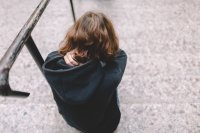Redefining At-Risk Kids
Your content has been saved!
Go to My Saved Content.Education is filled with phrases that are simplifications of complex challenges. The one that concerns me the most is the use of the term “at-risk” kids. That term is misleading and often used very simplistically. If we don’t define problems accurately, we can’t provide effective solutions. This is a classic example.
There are at least three different types of at-risk kids. The term is most often used to describe kids who have emotional problems that interfere with school performance, come from dysfunctional home environments, have had some problem with the law, and/or have been frequent behavioral challenges in school. Most programs for “at-risk” kids target these students and there have been multiple books and films that have focused on them, including the school in the film The Bad Kids, which I described in my last community post.
But my equal concern is two other categories of students who are the “hidden” at–risk students, hidden because of our present narrow definition. The most fascinating at-risk students to me are those I call the “creative dissidents.” These are kids who are gifted intellectually, creatively, and/or have a special talent. But they find traditional schools and classrooms boring and sometimes perceive them as destructive. Whether their perceptions are right is not the issue. The issue is that they are in learning environments that don’t meet their needs, that don't engage them. Frequently these students act out and become behavioral challenges, or withdraw. These kids are “at-risk.” And we need to recognize that and create alternative approaches that reach them.
When I visited Eagle Rock School in Colorado, an excellent school that targets at-risk kids from all over the country, I found many students who fit this description, many who were extremely gifted in writing, visual arts, or music, but had been a problem in their schools because they were so bored. At Eagle Rock they thrived.
The third group is the trickiest one because it is composed of kids who show few outward signs of being at-risk and who most educators often identify as exemplary students. They are often high achievers or at least pressured to achieve, may be school leaders, present no behavioral problems, and are clearly headed to college.
In her book The Price of Privilege, Madeline Levine described many of these students, privately stressed out by parental pressure, misguided by peer group injunctions and expectations, and not infrequently abusing drugs and/or alcohol. In her novel, The Most Dangerous Place on Earth, Lindsey Lee Johnson captures the lives of many of these kids. Based on her experience at Tamalpais High in Mill Valley, California, she takes us inside this world. It is fictionalized and there are a few too many troubled kids, but it rings true for any of us who know this environment and the many like it all across the country.
These kids are at-risk even if not publically engaged in self-destructive behavior because they don’t know who they are and are unprepared to make good choices in their adult lives. They’ve been programmed to conform and achieve, but the program lacks components that promote their development and find the right direction for a nourishing and fulfilling life.
There have been a number of studies looking at what happens to these kids after leaving high school and that document both their problems in college and their problems finding a meaningful direction after college. So we need to expand our definition of “at-risk” and more effectively address the needs and challenges of each group. Primary among these practices is a close relationship between teachers with students, a focus on the specific needs of these students, and building in the development of assessment and counseling skills for teachers and principals.
